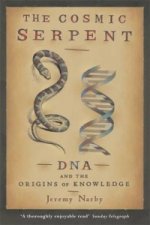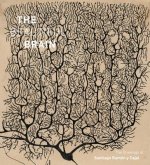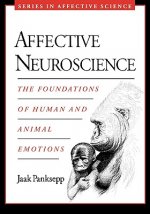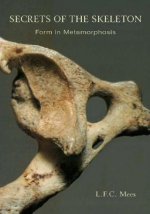
Code: 09201210
Hypocretins
by Luis De Lecea, J. Gregor Sutcliffe
The first report that rapid eye movements occur in sleep in humans was published in 1953. The research journey from this point to the realization that sleep consists of two entirely independent states of being (eventually labeled ... more
- Language:
 English
English - Binding: Paperback
- Number of pages: 441
Publisher: Springer-Verlag New York Inc., 2014
- More about this

140 €

Low in stock at our supplier
Shipping in 10 - 15 days
Potřebujete více kusů?Máte-li zájem o více kusů, prověřte, prosím, nejprve dostupnost titulu na naši zákaznické podpoře.
Add to wishlist
You might also like
-

Descriptive Catalogue of the Books Printed in the Fifteenth Century Lately Forming Part of the Library of the Duke Di Cassano Serra
47.86 € -

Ethnobotany of India, Volume 4
179.24 € -

A MEMORIAL DISCOURSE ON THE CHARACTER OF
33.27 € -

Compend of English Grammar (Classic Reprint)
16.01 € -

James K. Polk: Jacksonian, 1795-1843 Volume I
88.43 € -

Illustrated Course Guide: Microsoft (R) Office 365 & Excel 2016
61.11 € -

KS2 Maths Arithmetic SATs Practice Question Book
7.18 € -4 % -

International Tables for Crystallography
19.92 € -

Invaders
30.09 € -

Intelligent Routines II
215.29 € -

L'Enfant Prodigue, CD 61
13.34 € -

Kresťanské robotnícke a odborové hnutie na Slovensku
6.46 € -21 % -

Haare auf den Zahnen der Sabine K.
17.25 € -

Humoristische Skizzen Aus Dem Deutschen Handelsleben
28.44 €
Give this book as a present today
- Order book and choose Gift Order.
- We will send you book gift voucher at once. You can give it out to anyone.
- Book will be send to donee, nothing more to care about.
More about Hypocretins
You get 345 loyalty points
 Book synopsis
Book synopsis
The first report that rapid eye movements occur in sleep in humans was published in 1953. The research journey from this point to the realization that sleep consists of two entirely independent states of being (eventually labeled REM sleep and non-REM sleep) was convoluted, but by 1960 the fundamental duality of sleep was well established including the description of REM sleep in cats associated with "wide awake" EEG patterns and EMG suppression. The first report linking REM sleep to a pathology occurred in 1961 and a clear association of sleep onset REM periods, cataplexy, hypnagogic hallucinations and sleep paralysis was fully established by 1966. When a naďve individual happens to observe a full-blown cataplexy attack, it is both dramatic and unnerving. Usually the observer assumes that the loss of muscle tone represents syncope or seizure. In order to educate health professionals and the general public, Christian Guilleminault and I made movies of full-blown cataplectic episodes (not an easy task). We showed these movies of cataplexy attacks to a number of professional audiences, and were eventually rewarded with the report of a similar abrupt loss of muscle tone in a dog. We were able to bring the dog to Stanford University and with this as the trigger, we were able to develop the Stanford Canine Narcolepsy Colony. Breeding studies revealed the genetic determinants of canine narcolepsy, an autosomal recessive gene we termed canarc1. Emmanuel Mignot took over the colony in 1986 and began sequencing DNA, finally isolating canarc1 in 1999.
 Book details
Book details
Book category Books in English Mathematics & science Biology, life sciences Life sciences: general issues
140 €
- Full title: Hypocretins
- Subtitle: Integrators of Physiological Signals
- Author: Luis De Lecea, J. Gregor Sutcliffe
- Language:
 English
English - Binding: Paperback
- Number of pages: 441
- EAN: 9781461498063
- ISBN: 1461498066
- ID: 09201210
- Publisher: Springer-Verlag New York Inc.
- Weight: 712 g
- Dimensions: 25 × 155 × 26 mm
- Date of publishing: 27. November 2014
Trending among others
-

The Molecule of More
16.53 € -23 % -

Hidden History of the Human Race
14.06 € -19 % -

Story Genius
14.27 € -23 % -

Sapiens
35.74 € -4 % -

Reaching Down the Rabbit Hole
11.29 € -25 % -

Ways of Attending
26.18 € -

Homo Deus
31.94 € -18 % -

Conscious Mind
23 € -18 % -

Innovations in Cardio-Oncology
216.11 € -

Stealing Fire
16.22 € -21 % -

Undoing Project
11.08 € -14 % -

Sapiens
21.46 € -

Into the Magic Shop
17.97 € -8 % -

Brain
11.70 € -22 % -

It Was Snowing Butterflies
3.58 € -24 % -

Book of Beautiful Questions
27.72 € -6 % -

The Selfish Gene
12.32 € -23 % -

Power of Habit
15.19 € -5 % -

Cosmic Serpent
10.47 € -28 % -

Greatest Show on Earth
11.19 € -23 % -

The Extended Phenotype
13.34 € -23 % -

Speculations on the Evolution of Human Intelligence
9.75 € -7 % -

Homo Deus
11.39 € -21 % -

Biology of Belief
17.76 € -23 % -

Brain Rules (Updated and Expanded)
16.63 € -4 % -

Science of Meditation
10.98 € -24 % -

Evolution
28.96 € -8 % -

Descartes' Error
14.47 € -23 % -

Life on Earth
27.52 € -23 % -

Beautiful Brain
35.84 € -19 % -

Head Strong
24.03 € -16 % -

Affective Neuroscience
98.70 € -

Genetics
103.74 € -

Kew Tropical Plant Identification Handbook, The
22.07 € -23 % -

The Storytelling Animal
16.73 € -18 % -

Brain's Way of Healing
12.32 € -23 % -

On the Origin of Species
10.16 € -22 % -

Ancestor's Tale
15.19 € -24 % -

Incognito
17.97 € -8 % -

Incredible Unlikeliness of Being
14.47 € -23 % -

Plant Ecology
71.28 € -

Touch
12.32 € -23 % -

New Executive Brain
22.18 € -18 % -

Masters of the Planet
16.22 € -21 % -

Future Humans
29.37 € -

Secrets of the Skeleton
23.62 € -

Once We All Had Gills
44.98 € -

Zooarchaeology and Modern Human Origins
122.02 € -

Tree of Life
49.71 € -3 %
Collection points Bratislava a 2642 dalších
Copyright ©2008-24 najlacnejsie-knihy.sk All rights reservedPrivacyCookies


 15549 collection points
15549 collection points Delivery 2.99 €
Delivery 2.99 € 02/210 210 99 (8-15.30h)
02/210 210 99 (8-15.30h)